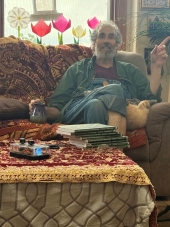












Success has a Thousand Fathers , Failure is an Orphan
LOOK AT THE " SIMILAR THREADS " BELOW !
















Andrew Parker wrote:I don't have a wayback machine, but if my memory serves me, the definition of wofati has evolved somewhat over time. Insulation of the sheltered mass, as one would with a Hait inspired umbrella (PAHS) home, seems to have become minimized or abandoned altogether, now emphasizing the R-value of the dry dirt itself.












 1
1




 , but as my son likes to remind me, I am too old to be doing that. There are quite a few idealogues here at Permies (it is about permaculture, after all). You need to be very conscientious and tread lightly, at times. I used to have 5 apples.
, but as my son likes to remind me, I am too old to be doing that. There are quite a few idealogues here at Permies (it is about permaculture, after all). You need to be very conscientious and tread lightly, at times. I used to have 5 apples. 





|
I guess everyone has an angle. Fine, what do you want? Just know that you cannot have this tiny ad:
The new purple deck of permaculture playing cards
https://www.kickstarter.com/projects/paulwheaton/garden-cards
|






